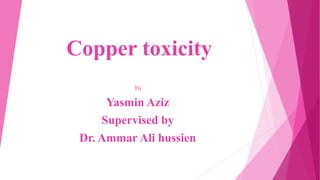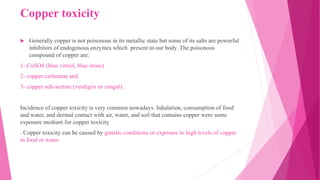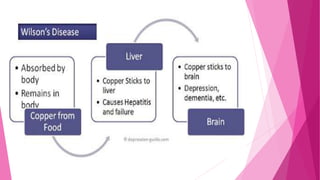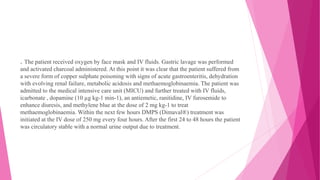Copper is an essential mineral but can become toxic in high amounts. Copper toxicity can result from genetic conditions, environmental exposure through water pipes, cookware, supplements, or occupational exposure. Symptoms of acute copper poisoning include vomiting, diarrhea, jaundice, and kidney failure. Chronic copper toxicity may cause anemia, neurological issues, and liver disease. Diagnosis involves measuring copper levels in blood and hair. Treatment focuses on chelation therapy using penicillamine or other chelating agents to remove excess copper from the body.



























![CASE STUDY
A 33-year-old woman, who was previously healthy, intentionally ingested an unknown
amount of highly concentrated CSP solution five hours before admission to the emergency
department. Immediately after the ingestion she vomited blue gastric content more than 10
times and passed several loose stools. She reported weakness, but denied any pain or other
symptoms, was fully conscious with blood pressure (70/40) mmHg [(93/53) hPa], heart rate
110 beats per minute, respiration rate 16 breaths per minute, oxygen saturation by pulse
oxymetry 86 %, axillary body temperature 33.2 °C, and outstanding blue discoloration of
the extremities distally to elbows and knees. The lungs were clear, the abdomen was non-
tender with normal bowel sounds. The electrocardiogram revealed sinus tachycardia](https://image.slidesharecdn.com/coppertoxicity-200509200734/85/Copper-toxicity-28-320.jpg)

